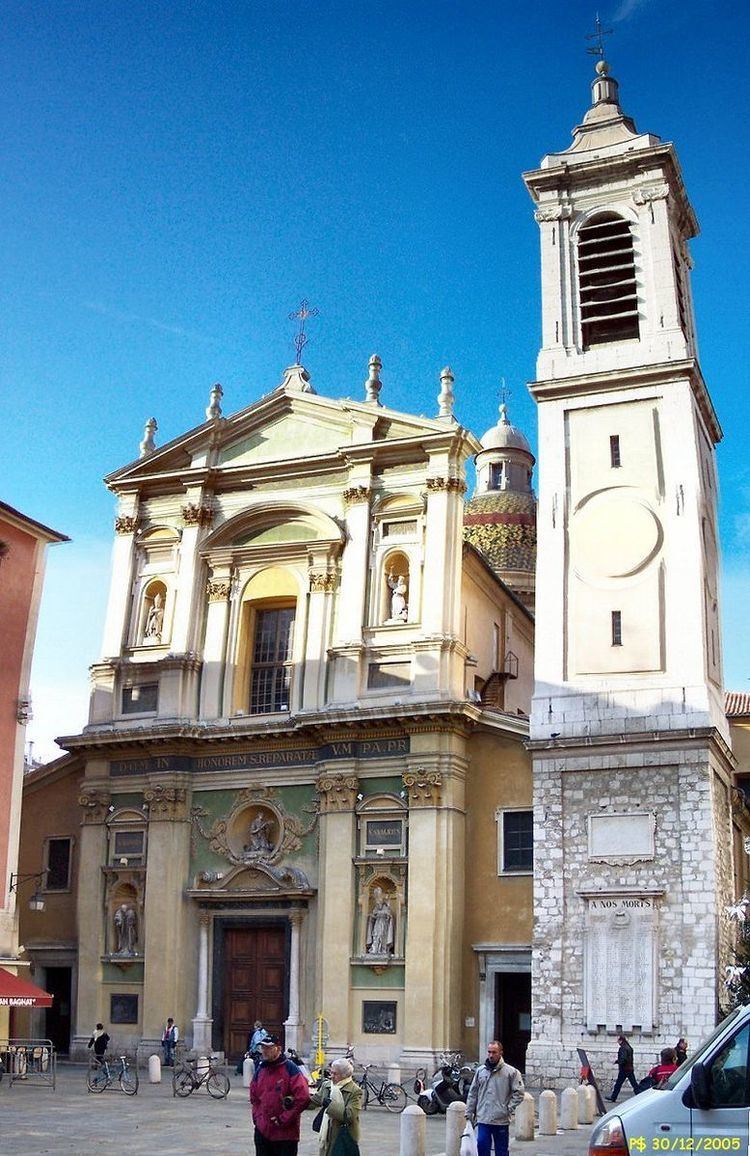Area 4,283 km² Country France | Phone +33 4 92 07 80 00 | |
 | ||
Population- Total- Catholics (as of 2013)1,210,000778,000 (64.3%) Address 23 Avenue Sévigné, 06100 Nice, France Similar Église Saint‑Jos, Église Saint‑Mar, Cathédrale Sainte‑R, Église Sainte‑Je d'Arc, Notre‑Da du Port Profiles | ||
The Roman Catholic Diocese of Nice (Latin: Dioecesis Nicensis; French: Diocèse de Nice) is a diocese of the Latin Church of the Roman Catholic Church in France. The diocese comprises the Départment of Alpes-Maritimes. The diocese is a suffragan of the Archdiocese of Marseille.
Contents
- History
- Bishops during the Avignon Papacy
- Bishops during the Great Western Schism
- Bishops of the Renaissance
- Modern Bishops
- References
Bishop Louis Albert Joseph Roger Sankalé, appointed on March 28, 2005, tendered his resignation on August 8, 2013. On Thursday, March 6, 2014, Pope Francis appointed Bishop André Marceau, who until then had been serving as bishop of the Roman Catholic Diocese of Perpignan–Elne, France, as Bishop of Nice. He was installed as bishop of Nice on May 11, 2014.
History
According to local tradition, Nice was evangelized by St. Barnabas, who had been sent by St. Paul, or else by St. Mary Magdalen, St. Martha, and St. Lazarus (who had been resurrected from the dead by Christ himself).
St. Bassus, a martyr under Emperor Decius, is believed to have been the first Bishop of Nice. The See of Nice in Roman Gallia Narbonensis is said to have existed in 314, since the bishop sent delegates to the Council of Arles in that year. Louis Duchesne, however, pointed out that Nice was not a city (civitas) and did not have its own municipal administration. It was governed from the city of Marseille by a civic functionary called an episcopus ('overseer'). In 314, this situation was still in effect, and the delegates sent to the Council of Nicaea came from the portus of Nice, not the civitas; the delegates represented the chief civic administrator, the episcopus from Marseille. In Duchesne's view, there was not yet an ecclesiastical leader in Nice called an episcopus.
The first bishop known by name is Amantius, who attended the Council of Aquileia in 381.
Cimiez, a civitas near Nice, but in the province of Alpes Maritimae and indeed its largest town, is claimed to have had an episcopal see around 260. The episcopal seat was held in the middle of the fifth century by St. Valerianus. A papal rescript of Pope Leo I (440–461), issued after AD 450, joined the two dioceses into one. This union was undone by Pope Hilarius, but in 465 he reunited the sees of Nice and Cimiez at the demand of Bishop Ingenuus of Embrun, the Metropolitan of the Alpes Maritimae, who was quarreling with Bishop Auxanius. This united see was a suffragan of ancient Diocese of Embrun up to the French Revolution.
When the Emperor Charlemagne happened to visit Cimiez (which had been devastated by the Lombards in 574), he caused Bishop Syagrius of Nice to build on its ruins the monastery of Saint Pontius of Cimiez.
Bishops of Nice bore the title of Counts of Drap, since the donation of property situated at Drap made in 1073 by Pierre, Bishop of Vaison, a native of Nice, to Bishop Raymond I and his successors. This made the Bishops of Nice prince-bishops. In 1388 Nice fell under the political control of the Counts of Savoy.
The diocese was re-established by the Concordat of 1801 as suffragan of Aix. While the Countship of Nice from 1818 to 1860 was part of the Sardinian States, the see became a suffragan of Genoa. When Nice was annexed to France in 1860, certain parts which remained Italian were cut off from it and added to the Diocese of Vintimille. In 1862 the diocese was again a suffragan of Aix. The arrondissement of Grasse was separated from the Diocese of Fréjus in 1886, and given to Nice which since unites the three former diocese of Nice, diocese of Grasse and diocese of Vence.
